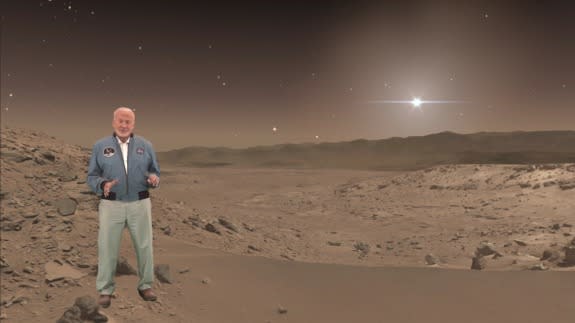NASA and Microsoft plan to take you to Mars with the HoloLens

Want to go to Mars?
While a real trip to the red planet might be decades away for NASA astronauts, people on Earth can take a trip to the rusty surface of Mars using Microsoft's HoloLens technology.
SEE ALSO: Astronaut Scott Kelly, who spent 340 days in space, gives the HoloLens his stamp of approval
NASA will open a new exhibit this summer called "Destination: Mars" at the Kennedy Space Center in Florida, featuring a tour of different sites on Mars guided, in part, by Apollo 11 astronaut Buzz Aldrin, the second person to walk on the moon.
The exhibit will feature places on Mars mapped by the Curiosity rover, which has been exploring the red planet from its surface since its landing in 2012.
“This experience lets the public explore Mars in an entirely new way," Doug Ellison, visualization producer at NASA, said in statement. "To walk through the exact landscape that Curiosity is roving across puts its achievements and discoveries into beautiful context."
"Destination: Mars" is based on a tool called OnSight created by Microsoft and NASA's Jet Propulsion Laboratory in California.
Scientists use the program to figure out other places that Curiosity should drive, and to even pick out geological formations they might want to study close up by immersing researchers in the world.
"Thinking about Martian geology is a lot more intuitive when I can stand in the scene and walk around the way I would if I were in the field," Abigail Fraeman, a Curiosity science team member said in the statement.
This isn't the only way NASA is teaming up with Microsoft's HoloLens.
NASA astronaut Scott Kelly used the augmented reality tool during his 340-day stay onboard the International Space Station.
In an ideal world, the device will be used by mission managers to communicate various tasks to astronauts.
"By connecting astronauts to experts on the ground," Jeff Norris, project manager for OnSight said, "mixed reality could be transformational for scientific and engineering efforts in space."

